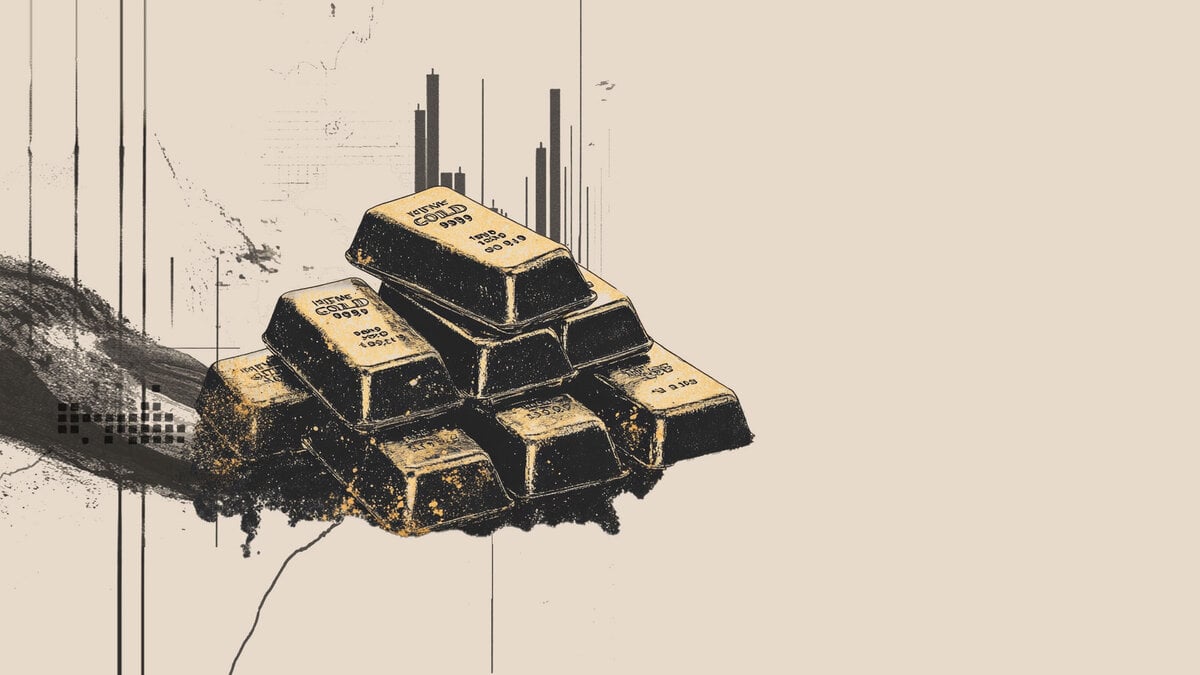Created
: 2025.05.05














![]() 2025.05.05 13:19
2025.05.05 13:19
Gold price (XAU/USD) attracts some buyers at the start of a new week and climbs to the $3,271 region during the Asian session amid a combination of supporting factors. Against the backdrop of the protracted Russia-Ukraine war, an escalation of the Middle East conflict keeps the geopolitical risk in play. Furthermore, the uncertainty over US President Donald Trump's tariff plans weighs on investors' sentiment and benefits the traditional safe-haven precious metal.
Meanwhile, the initial market reaction to the better-than-expected release of the US monthly jobs report on Friday fades rather quickly amid heightened economic uncertainty on the back of Trump's tariffs. Apart from this, bets for an imminent start of the Federal Reserve's (Fed) rate-cutting cycle keep the US Dollar (USD) depressed below a multi-week high touched last Thursday. This turns out to be another factor driving flows towards the non-yielding Gold price.

From a technical perspective, the precious metal last week showed some resilience below the 50% Fibonacci retracement level of the move higher from the vicinity of mid-$2,900s. The subsequent bounce from the $3,200 neighborhood warrants some caution before positioning for an extension of the recent pullback from the $3,500 mark, or the all-time peak touched in April. Any further move up, however, is more likely to confront stiff resistance near the $3,260-3,265 horizontal support breakpoint, now turned resistance. A sustained strength beyond the latter, however, could lift the Gold price to the $3,348-$3,350 supply zone en route to the $3,367-$3,368 intermediate hurdle and the $3,400 round figure.
On the flip side, weakness below the $3,225 region (50% Fibo. level) might continue to find some support ahead of the $3,200 mark. A convincing break below the said handle would make the Gold price vulnerable to accelerate the downfall towards the $3,170-3,165 confluence, comprising the 61.8% Fibo. level and the 200-period Simple Moving Average (SMA) on the 4-hour chart. Some follow-through selling will be seen as a fresh trigger for bearish traders and pave the way for a further near-term depreciating move.
Gold has played a key role in human's history as it has been widely used as a store of value and medium of exchange. Currently, apart from its shine and usage for jewelry, the precious metal is widely seen as a safe-haven asset, meaning that it is considered a good investment during turbulent times. Gold is also widely seen as a hedge against inflation and against depreciating currencies as it doesn't rely on any specific issuer or government.
Central banks are the biggest Gold holders. In their aim to support their currencies in turbulent times, central banks tend to diversify their reserves and buy Gold to improve the perceived strength of the economy and the currency. High Gold reserves can be a source of trust for a country's solvency. Central banks added 1,136 tonnes of Gold worth around $70 billion to their reserves in 2022, according to data from the World Gold Council. This is the highest yearly purchase since records began. Central banks from emerging economies such as China, India and Turkey are quickly increasing their Gold reserves.
Gold has an inverse correlation with the US Dollar and US Treasuries, which are both major reserve and safe-haven assets. When the Dollar depreciates, Gold tends to rise, enabling investors and central banks to diversify their assets in turbulent times. Gold is also inversely correlated with risk assets. A rally in the stock market tends to weaken Gold price, while sell-offs in riskier markets tend to favor the precious metal.
The price can move due to a wide range of factors. Geopolitical instability or fears of a deep recession can quickly make Gold price escalate due to its safe-haven status. As a yield-less asset, Gold tends to rise with lower interest rates, while higher cost of money usually weighs down on the yellow metal. Still, most moves depend on how the US Dollar (USD) behaves as the asset is priced in dollars (XAU/USD). A strong Dollar tends to keep the price of Gold controlled, whereas a weaker Dollar is likely to push Gold prices up.
![]()
Created
: 2025.05.05
![]()
Last updated
: 2025.05.05

FXStreet is a forex information website, delivering market analysis and news articles 24/7.
It features a number of articles contributed by well-known analysts, in addition to the ones by its editorial team.
Founded in 2000 by Francesc Riverola, a Spanish economist, it has grown to become a world-renowned information website.
We hope you find this article useful. Any comments or suggestions will be greatly appreciated.
We are also looking for writers with extensive experience in forex and crypto to join us.
please contact us at [email protected].
Disclaimer:
All information and content provided on this website is provided for informational purposes only and is not intended to solicit any investment. Although all efforts are made in order to ensure that the information is correct, no guarantee is provided for the accuracy of any content on this website. Any decision made shall be the responsibility of the investor and Myforex does not take any responsibility whatsoever regarding the use of any information provided herein.
The content provided on this website belongs to Myforex and, where stated, the relevant licensors. All rights are reserved by Myforex and the relevant licensors, and no content of this website, whether in full or in part, shall be copied or displayed elsewhere without the explicit written permission of the relevant copyright holder. If you wish to use any part of the content provided on this website, please ensure that you contact Myforex.
Myforex uses cookies to improve the convenience and functionality of this website. This website may include cookies not only by us but also by third parties (advertisers, log analysts, etc.) for the purpose of tracking the activities of users. Cookie policy